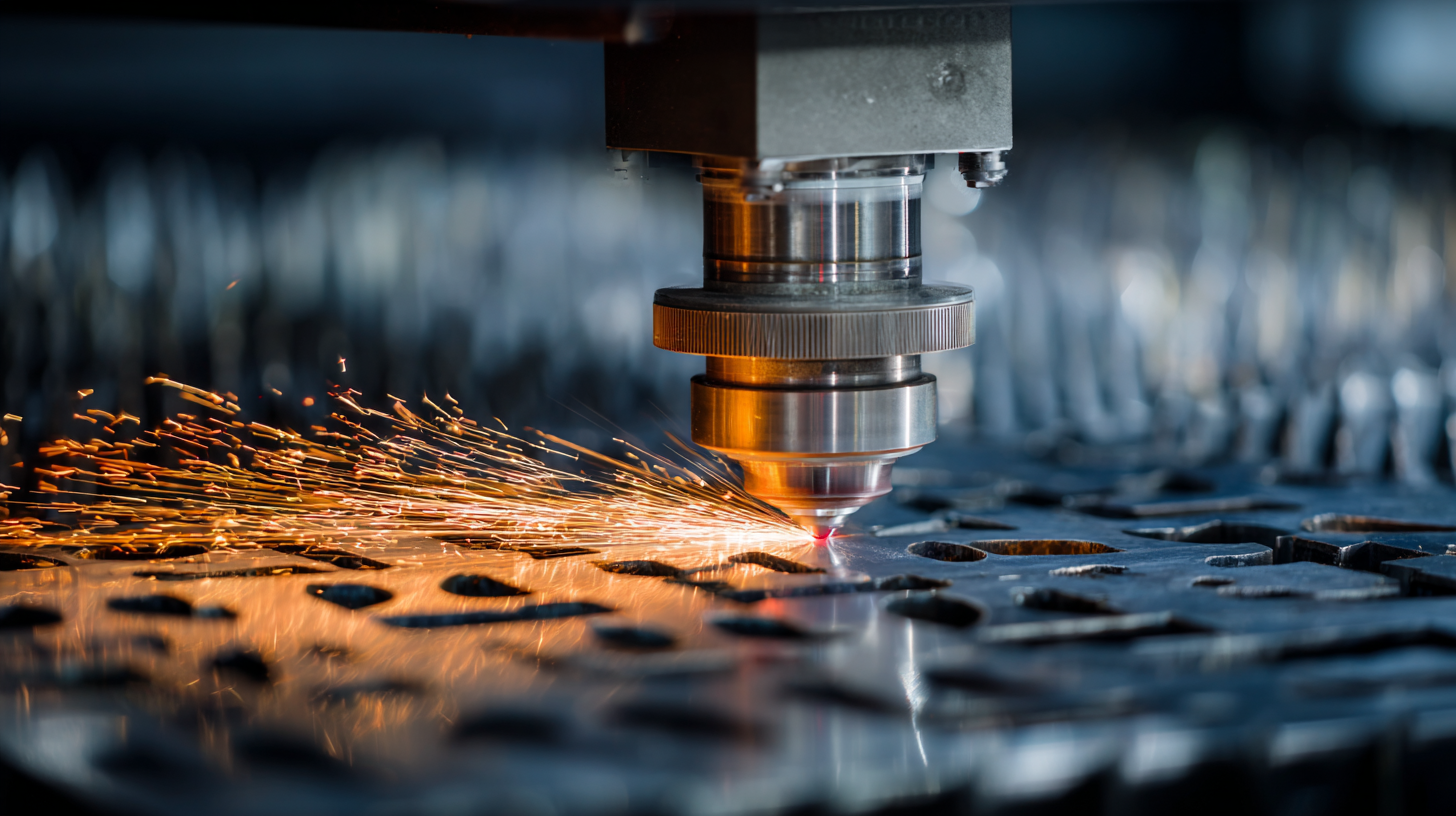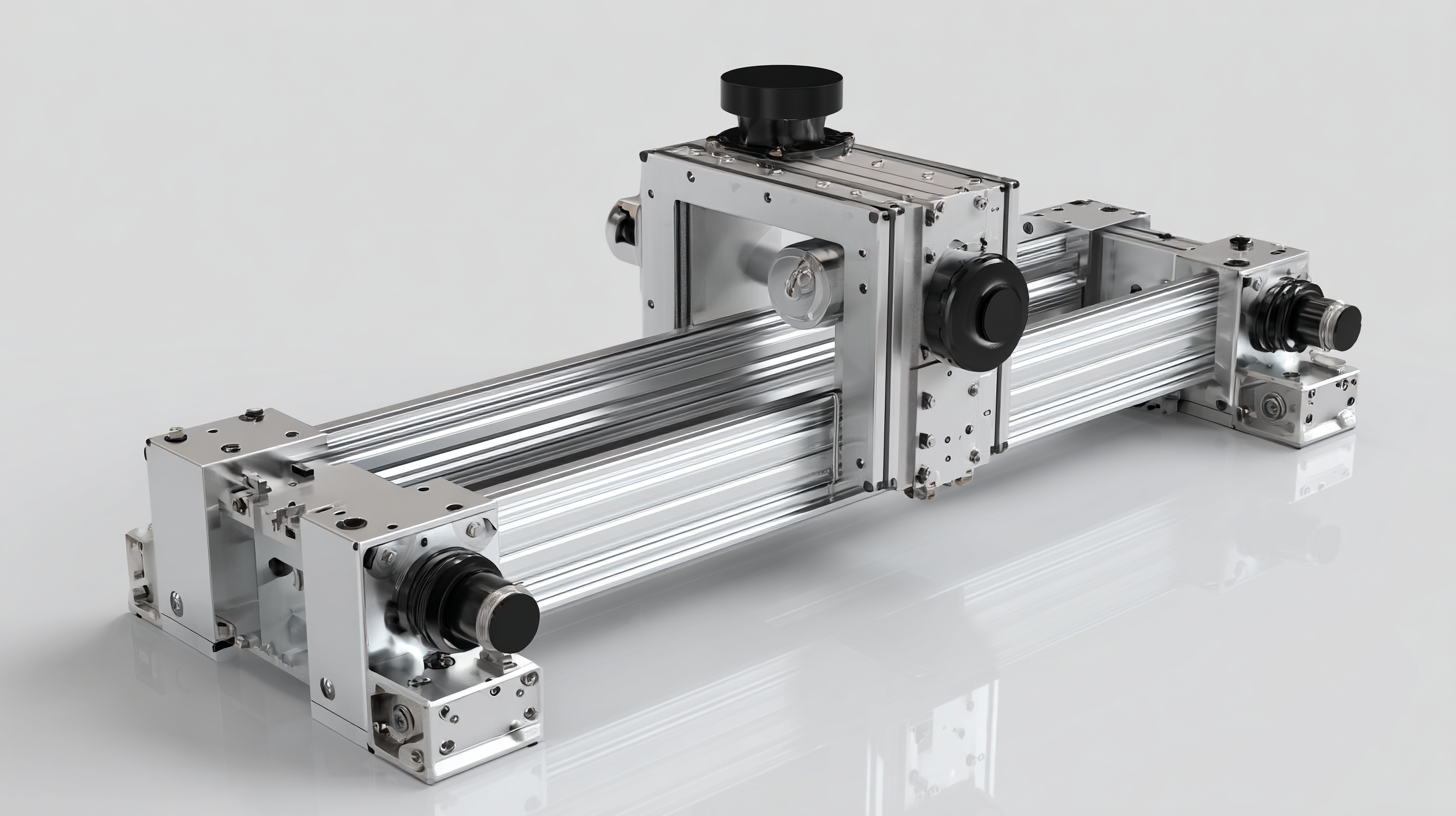© 2025 Messer Cutting Systems, Inc.
In the rapidly evolving landscape of manufacturing technology, Laser CNC has emerged as a cornerstone of precision engineering, driving innovations across various industries. According to a report by Market Research Future, the global CNC machine market is projected to reach approximately $100 billion by 2025, with a significant share attributed to laser cutting technology. This surge in demand is fueled by the need for high-speed, accurate machining processes that minimize material waste and enhance productivity. China's prowess in manufacturing, highlighted by its "智造" (intelligent manufacturing) initiatives, positions the nation as a leading supplier in the global market, noted for robust quality assurance standards. As businesses seek to improve operational efficacy, understanding the comprehensive technical specifications and usage of Laser CNC systems becomes crucial for unlocking precision in production processes.

Laser CNC technology has revolutionized various manufacturing processes, offering unprecedented precision and efficiency. With the increasing demand for high-quality products, the integration of advanced laser technology has become critical. Reports indicate that laser cutting can achieve tolerances of ±0.01 mm, which is significantly superior to traditional cutting methods. This level of precision not only enhances product quality but also reduces material waste, driving down costs for manufacturers.
Understanding the technical specifications of laser CNC systems is essential for optimal usage. Factors such as laser power, speed, and focus significantly influence the outcomes of the cutting or engraving processes. Future trends in laser technology reveal a shift towards higher power lasers and smarter control systems, allowing for enhanced adaptability in various materials, from metals to composites. One study highlighted that the implementation of laser cutting in creating complex geometries improves efficiency by up to 25%, making it a preferred choice for diverse applications across industries. As this technology continues to evolve, staying informed about its specifications and capabilities will empower users to unlock its full potential.
| Specification | Value |
|---|---|
| Laser Type | CO2 Laser |
| Laser Power | 80W |
| Cutting Area | 1300 x 900 mm |
| Max Cutting Speed | 600 mm/s |
| Supported Materials | Acrylic, Wood, Leather, Fabric |
| Software Compatibility | CorelDRAW, AutoCAD, Inkscape |
| Cooling System | Water Cooling |
| Weight | 200 kg |
| Dimensions (L x W x H) | 1800 x 1300 x 1100 mm |
When it comes to achieving optimal performance in Laser CNC machines, understanding the key technical specifications is crucial. These specifications not only influence the machine's efficiency but also determine the quality of the finished product. One of the most critical factors is the laser power, measured in watts. Higher wattage typically allows for faster cutting speeds and the ability to work with thicker materials, making it essential to match the power of the machine with the intended application.
Another important specification is the laser wavelength, which affects the absorption of the material being cut. Different materials absorb laser energy at different wavelengths, so selecting a machine with the appropriate wavelength for your specific materials can significantly enhance cutting precision and efficiency.
Additionally, the cutting speed, usually measured in millimeters per minute, provides insight into how quickly the machine can operate without compromising quality. A well-balanced combination of these factors will ensure that users can achieve precise cuts and intricate designs, making it essential for anyone looking to maximize their Laser CNC machine's capabilities.
Laser CNC technology is revolutionizing the manufacturing landscape by providing unparalleled precision and efficiency across various industries. In sectors such as aerospace, automotive, and electronics, the ability to cut and engrave materials with exceptional accuracy is a game changer. This technology allows manufacturers to produce intricate designs and components with minimal waste, ultimately reducing production costs and time. As industries strive for higher standards of quality, laser CNC systems are stepping up to meet these challenges by enabling intricate detailing that was previously unattainable with traditional machining techniques.
Moreover, the versatility of Laser CNC applications is noteworthy. From sheet metal fabrication to wood and plastic engraving, this technology adapts to an array of materials and processes. In the fashion industry, for instance, designers are utilizing laser cutting for fabric patterns, leading to innovative designs and shorter production times. Additionally, in the medical field, laser CNC is being employed to create precise instruments and implants, highlighting its significance in enhancing product reliability. As Laser CNC continues to evolve, its role in transforming manufacturing practices is indelibly established, paving the way for smarter and more efficient production methods.

When it comes to investing in a laser CNC machine, understanding the specific needs of your business is paramount. Different industries and applications require different types of laser CNC systems, whether for engraving, cutting, or marking. For instance, if your business focuses on intricate designs or fine details, a CO2 laser CNC might be the best fit, as it excels in cutting through materials like wood, acrylic, and leather with remarkable precision.
On the other hand, businesses involved in metalworking may find fiber laser CNC machines more suitable, given their superior efficiency and speed when cutting through various metals.
Selecting the right type of laser CNC also involves considering the size of your operations and the scale of your projects. Smaller, more compact machines may be ideal for small workshops or startups, offering a balance between affordability and capability. In contrast, larger-scale production facilities may require advanced laser systems with high wattage and automation features to keep pace with demand.
By carefully assessing your business needs and understanding the strengths of each laser CNC type, you can make an informed decision that enhances productivity and quality in your manufacturing processes.
 Operating and maintaining laser CNC equipment requires a blend of skill, knowledge, and adherence to best practices to ensure optimal performance and longevity. First and foremost, operators should familiarize themselves with the specific technical specifications of their equipment. Understanding the different settings, such as power levels, speed, and material compatibility, is crucial for achieving precise cuts and engravings. Regularly consulting the manufacturer's manual can provide valuable insights into optimal configurations tailored for various applications.
Operating and maintaining laser CNC equipment requires a blend of skill, knowledge, and adherence to best practices to ensure optimal performance and longevity. First and foremost, operators should familiarize themselves with the specific technical specifications of their equipment. Understanding the different settings, such as power levels, speed, and material compatibility, is crucial for achieving precise cuts and engravings. Regularly consulting the manufacturer's manual can provide valuable insights into optimal configurations tailored for various applications.
Maintenance is equally important in extending the lifespan of laser CNC machines. Regular cleaning of the optics is essential to prevent debris and residue buildup, which can adversely affect cutting quality. Operators should implement a routine inspection checklist, including checking for wear on the lens and mirrors, ensuring that the cooling system is functioning correctly, and verifying proper alignment of components. Additionally, timely software updates will enhance functionality and performance, allowing users to utilize the latest features and improvements. By following these best practices, operators can unlock the full potential of their laser CNC equipment, ensuring precision and reliability in every project.
© 2025 Messer Cutting Systems, Inc.